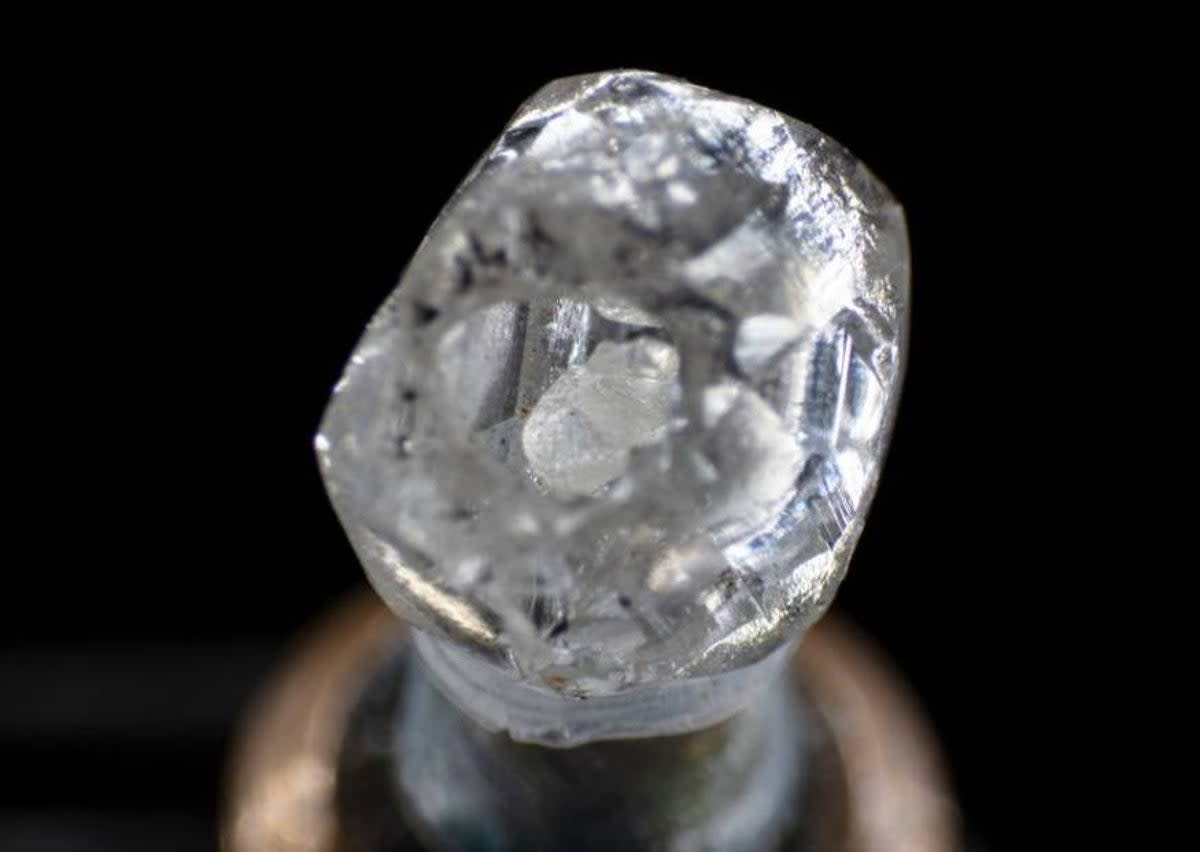A company in India’s Surat says it has unearthed a unique “diamond within a diamond” – one of the rarest of the rare when it comes to such stones.
The firm VD Global has given the rare piece the moniker the ‘Beating Heart,’ and says it consists of a piece of diamond that had another smaller piece trapped inside, and that was moving freely, according to Times of India.
The 0.329-carat stone was initially found in the rough in October last year by the diamond manufacturer which operates from Surat and Mumbai and has a business spread globally.
The Gem & Jewelery Export Promotion Council (GJEPC) set up by the Indian government noted in a statement that the “Beating Heart” joins a small group of similar natural diamonds such as the Matryoshka diamond from Siberia that was first recorded in 2019.
The company reportedly reached out to the international corporation De Beers headquartered in the UK, and sent the stone for further thorough analysis at its facility in Maidenhead.
The authenticity of the find was confirmed via further analysis using optical and electron microscopes.
“I have certainly never seen anything like the ‘Beating Heart’ during my last 30 years in the diamond sector,” said Samantha Sibley, Technical Educator at De Beers Group Ignite.
“Using the expertise of De Beers Group, we can shed light on the formation and structure of this natural specimen and share these insights with a wider community of diamond professionals,” said Ms Sibley, according to GJEPC.
The rare diamond was found to have “etch features” visible on both the smaller diamond in the inner cavity.

Experts say the cavity may have formed due to the preferential etching of an intermediate layer of poor-quality fibrous diamond.
“The ‘Beating Heart’ is a remarkable example of what can happen on the natural diamond journey from formation to discovery,” Jamie Clark, Head of Global Operations at De Beers Institute of Diamonds, said.
“A find like this demonstrates why natural diamond formation and origin is such a fascinating area of study and why it is important to strive for advancements in testing and analysis that can contribute to our knowledge of natural diamond growth,” added Mr Clark.
Originally published
